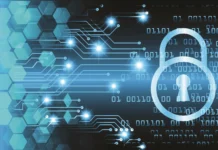In today’s digital age, our lives are increasingly intertwined with the internet. From banking and shopping to social media and entertainment, we rely on online services for almost everything. But as we become more connected, we also become more vulnerable to cyber threats such as hacking, identity theft, and malware. That’s why digital security is more important than ever.
In this guide, we’ll explore the basics of digital security, including what it is, why it matters, and how to stay safe online. We’ll cover everything from setting strong passwords and protecting your devices to avoiding scams and securing your data. So let’s dive in!
What is Digital Security?
Digital security, also known as cybersecurity, is the practice of protecting your digital life from cyber threats. This includes protecting your devices, networks, and sensitive information from hackers, viruses, malware, and other malicious attacks. Digital security is essential for anyone who uses the internet, whether for personal or professional purposes.
Why is Digital Security Important?
The internet is a vast and complex ecosystem, and it’s easy to fall prey to cybercriminals if you’re not careful. A single breach in your digital security can lead to devastating consequences, including identity theft, financial loss, and reputational damage. By taking proactive measures to protect yourself online, you can avoid these risks and enjoy a safe and secure digital experience.
Tips for Digital Security:
- Use Strong Passwords
One of the most basic but important steps you can take to protect your digital life is to use strong passwords. A strong password is one that is at least 12 characters long and includes a mix of upper and lowercase letters, numbers, and symbols. Avoid using common words or phrases, and never reuse passwords across different accounts.
- Keep Your Devices Updated
Another critical aspect of digital security is keeping your devices updated with the latest software and security patches. These updates often contain fixes for known vulnerabilities that hackers can exploit to gain access to your devices or data. Make sure to enable automatic updates whenever possible and keep an eye out for security alerts.
- Use Two-Factor Authentication
Two-factor authentication (2FA) is an additional layer of security that requires you to provide a second form of authentication, such as a code or fingerprint, in addition to your password. This makes it much more difficult for hackers to gain access to your accounts, even if they manage to obtain your password.
- Beware of Phishing Scams
Phishing scams are a common tactic used by cybercriminals to trick you into revealing your personal information, such as login credentials or credit card details. These scams often take the form of fake emails, texts, or websites that mimic legitimate ones. Always be skeptical of unsolicited messages and never click on links or download attachments from unknown sources.
- Secure Your Wi-Fi Network
If you have a home Wi-Fi network, it’s essential to secure it with a strong password and encryption. This will prevent unauthorized access to your network and any devices connected to it. You should also avoid using public Wi-Fi networks, as these are often unsecured and vulnerable to cyber attacks.
FAQs
What is malware?
Malware is a type of malicious software that is designed to harm your computer or steal your data. This can include viruses, worms, Trojans, and spyware.
What is a VPN?
A VPN, or virtual private network, is a tool that encrypts your internet connection and routes it through a secure server. This provides an additional layer of privacy and security, especially when using public Wi-Fi networks or accessing restricted content.
What should I do if I think my account has been hacked?
If you suspect that your account has been compromised, change your password immediately and enable two-factor authentication if you haven’t already. You should also review your account activity and log out of any active sessions. If you’re unable to regain access to your account, contact the provider’s support team for assistance.
Conclusion
Digital security is a crucial aspect of modern life, and it’s essential to take proactive measures to protect yourself from cyber threats. By following the tips and best practices outlined in this guide, you can safeguard your digital life and enjoy a safe and secure online experience. Remember to stay vigilant, use strong passwords, and keep your devices updated and secure. With a little effort and awareness, you can protect yourself from cybercriminals and enjoy the many benefits of the digital age.






